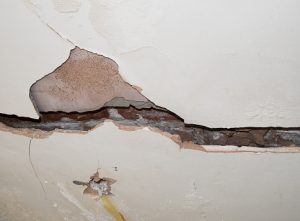The Dangers of Wall Cracks

The only way to truly determine whether a wall crack is dangerous or not is to have it checked by a professional; that said, you can look at cracks yourself to see whether you need to call someone or not.
The only way to truly determine whether a wall crack is dangerous or not is to have it checked by a professional; that said, you can look at cracks yourself to see whether you need to call someone or not. During the first year or two after construction, it’s perfectly normal to notice small, thin cracks here and there. This is because during that time, houses settle. However, if you see a gaping or horizontal crack in your wall this may indicate damage and need to be checked out.
Horizontal Cracks
The first step to determining the seriousness of a wall crack is to examine it to see which direction it is going on the wall. If the crack is vertical and starts near the corner where the wall and ceiling meet, it might be a sign that it was created when the foundation settled after construction. Vertical cracks run the same direction as drywall, generally making them less serious.
If the crack is horizontal or runs at a jagged 45-degree angle, it might mean there’s a more serious problem such as severe foundation shifting or water damage. These wall cracks usually require professional attention to address and fix, and depending on their severity may require some reconstruction.
Stair Cracks
A stair-step crack looks like a flight of stairs and runs in both vertical and horizontal directions across the wall. These wall cracks are typically found on the cinder block walls of unfinished basements. Mostly, they are just caused by soil settling after construction. Unfortunately the only definitive way to tell if the issue is serious is to hire an engineer to perform soil tests and core drill tests to determine what repairs are needed.
Doors and Windows
Another way to test the seriousness of a wall crack is to open and close internal doors to bedrooms and bathrooms and evaluate whether the doors stick. If so, ensure the sticking isn’t a result of paint, damaged hardware or cracked wood. If you find that there’s nothing obstructing the swinging motion of the door, it could be a sign of a moderate to severe foundation change, which frequently causes wall cracks.
Visible Nails
If you look at the area surrounding the wall crack and see nail or screw heads sticking out, this is known as “nail popping” or “nail pops”. This is when the nail or screw pulls away from the wooden stud that’s underneath the drywall. They probably didn’t damage the drywall, but nail popping can be an indicator of structural issues and should be addressed.
Ready To Fix Those Pesky Wall Cracks?
If you are ready to get a professional to install French drains in your home, contact All Aspects Waterproofing, a Better Business Bureau A+ rated company with over 30 years of experience in the Washington, DC./Maryland/Virginia area. We have a great deal of experience in waterproofing, mold testing, and mold remediation, and we want to make you feel at home again. Contact us online or by calling 1-866-999-3110 or 301-766-4420. To see what we’re up to, follow us on Facebook, Twitter, Google+, Pinterest, YouTube, LinkedIn, and Houzz.
